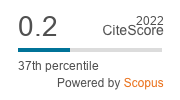The Problem of Phenomenal Consciousness and Connectionist Representationalism
Abstract
Subjective experience, or the phenomenal aspect of consciousness, apparently is an intractable problem for the ambitious programme of the science of the mind that is known as “cognitive science”. Connectionism, one of the approaches in the field of Cognitive science, tries to explain consciousness in cognitive or representational terms. This sort of representationalism faces a formidable obstacle. It leaves out the subjective experiential quality of consciousness, in that any reductive explanation of the subjective quality of experience in neurological, cognitive or functional terms is destined to miss out on the fact of the feel of a conscious state. Neural constitution and function are a kind of fact different from, even though related to, the kind of fact that a subjective experiential feel occurring in a neuro-functional condition. This in a nutshell, is the problem of phenomenal consciousness. However, Connectionist cognitive scientists profess the view that a solution to this problem is possible through what they describe as the Representational Vehicle Theory (rvt). rvt identifies phenomenal consciousness with stable pattern of activation or explicit neural representation of information. In this paper, I shall argue that rvt might only be adequate to solve the “easy” problem of consciousness, and not the “hard” problem. For it is designed to specify the mechanism of cognitive functions underlying subjective experience, whereas the problem of subjective feel persists even after the performance of all the relevant functions are explained.



